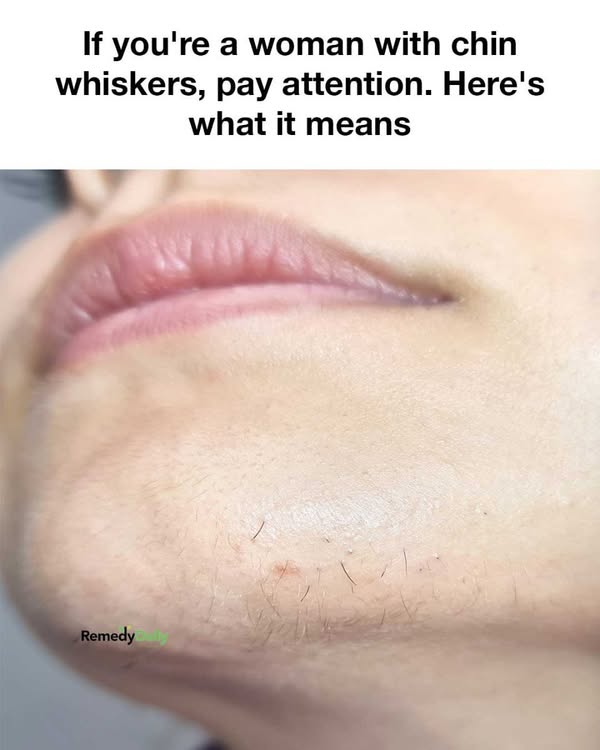Chin whiskers are a surprisingly common concern for many women and can lead to questions about why they appear and how best to manage them. These stray facial hairs can range from barely noticeable, light, and fine strands to darker, thicker, and more stubborn ones that seem to grow back faster than they disappear.

While having chin whiskers is often completely normal, many women find them frustrating or even embarrassing. The truth is that a combination of hormonal changes, genetics, and underlying health conditions can all contribute to facial hair growth. Understanding the root causes of chin whiskers is essential not only for managing them effectively but also for easing the worry that sometimes comes with their appearance. Like all hair on the body, chin hair grows in cycles consisting of the anagen (growth), catagen (transition), and telogen (rest) phases. This cycle is influenced by androgens—hormones like testosterone that everyone has, including women. When androgen levels become elevated or the body becomes more sensitive to them, women may notice an increase in facial hair. This is particularly true for women with conditions like polycystic ovary syndrome (PCOS), which is one of the most common hormonal causes of excess facial hair and can result in hirsutism, a condition characterized by male-pattern hair growth.
Menopause is another time in life when women often see more chin hair, due to declining estrogen levels, which can throw hormone balance off. Even certain medications like birth control pills, hormone replacement therapies, or steroids can contribute to facial hair changes. Genetics also play a key role in hair growth patterns. If your mother, grandmother, or sisters have chin whiskers, chances are you might develop them too. Ethnicity is another factor, as women of Mediterranean, Middle Eastern, and South Asian heritage often experience more noticeable facial hair.
In some cases, chin whiskers can point to more serious medical concerns. Conditions such as Cushing’s syndrome, adrenal gland disorders, thyroid imbalances like hypothyroidism, or even certain hormone-producing tumors may cause excessive facial hair. If facial hair appears suddenly, or is accompanied by symptoms like acne, weight gain, or irregular periods, it’s important to consult a healthcare provider who may recommend hormone tests or imaging to investigate further. Besides the physical symptoms, chin whiskers can affect emotional well-being and confidence.
@realronsina Don’t worry about my chin hair! #realronsina #fypシ #fyppppppppppppppppppppppp #comedian #chinhair #tiktokpartner ♬ original sound – Real Ronsina
Many women report feeling self-conscious or anxious about their appearance, spending considerable time and money on hair removal products or appointments. Constant grooming can also lead to skin irritation or ingrown hairs, adding to the stress. Social interactions may be impacted, and in some cases, women avoid certain situations altogether. The mental toll of unwanted facial hair can lead to low self-esteem, body image struggles, and even depression or anxiety in extreme cases. Fortunately, there are several options available for managing chin whiskers. Temporary hair removal methods include shaving, plucking, waxing, and using depilatory creams, though these need to be repeated regularly. For longer-lasting results, many women turn to laser hair removal or electrolysis, which work by targeting and damaging hair follicles to reduce growth. Prescription treatments like eflornithine cream can help slow hair growth over time and are often used alongside other methods. When choosing a hair removal approach, consider your skin sensitivity, budget, and how much maintenance you’re comfortable with. A dermatologist can provide tailored advice, especially if your skin is prone to irritation. For those seeking more natural strategies, lifestyle changes may help. Maintaining a healthy weight is particularly important for women with PCOS, as it can help regulate hormone levels. A diet rich in whole foods, fruits, and vegetables supports overall health, while spearmint tea has shown promise in reducing androgen levels naturally. Managing stress through activities like yoga, meditation, or regular exercise may also balance hormones and reduce unwanted hair growth. In the end, whether a woman chooses to remove her chin whiskers or embrace them, the most important factor is feeling confident and comfortable in her own skin. Chin hair is a normal part of life for many women, and by understanding the causes and exploring the many options for care, women can make informed decisions that support both their appearance and well-being. No one should feel alone or ashamed of something so common, and thankfully, there are resources and support to help every step of the way.





